- Webinars
Natural Gas Decarbonization Strategies and Impacts
The United States is moving towards a net zero carbon future, with key sectors needing targeted actions to achieve that vision. As the combustion of natural gas creates a significant share of domestic emissions, reaching net zero necessitates decarbonizing the natural gas system and its end uses.
The following sections summarize Energeia’s recent research into natural gas decarbonization pathways, including how those pathways would impact the economy and reshape energy markets and bulk system needs. Read on to learn more about the techniques we have developed to optimize natural gas decarbonization from a whole-of-system perspective.
Gas Sector Contributors in United States’ Emissions
The United States rejoined the Paris Agreement in 2021. The federal government also developed a net-zero goal by 2050 via executive order,[1] though this target was not included in its 2021 Nationally Determined Contribution (NDC), a climate action plan every country must submit every five years as part of the Paris Agreement.
Figure 1 presents the United States’ emission projections by economic sector under business as usual.
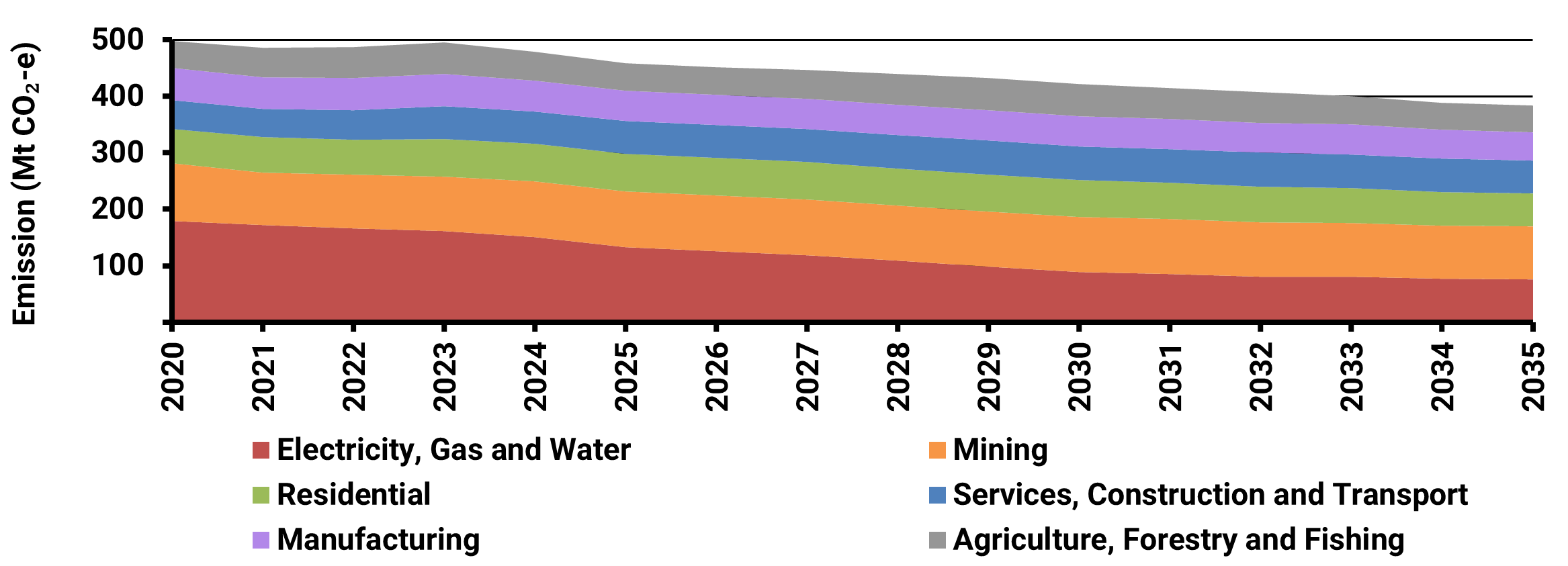
Whilst electricity generation is rapidly decarbonizing thanks to renewable energy, emissions in other sectors pose challenges. The US Environmental Protection Agency (EPA) estimates that in 2022 emissions from natural gas consumption (like heating and cooking) represented 78% of the direct fossil fuel CO2 emissions from the residential and commercial sector.[2] Decarbonizing natural gas is therefore crucial for achieving state and federal carbon reduction targets, and local and national organizations need to focus on innovative strategies to decarbonize it.
Gas Decarbonization Key Pathways
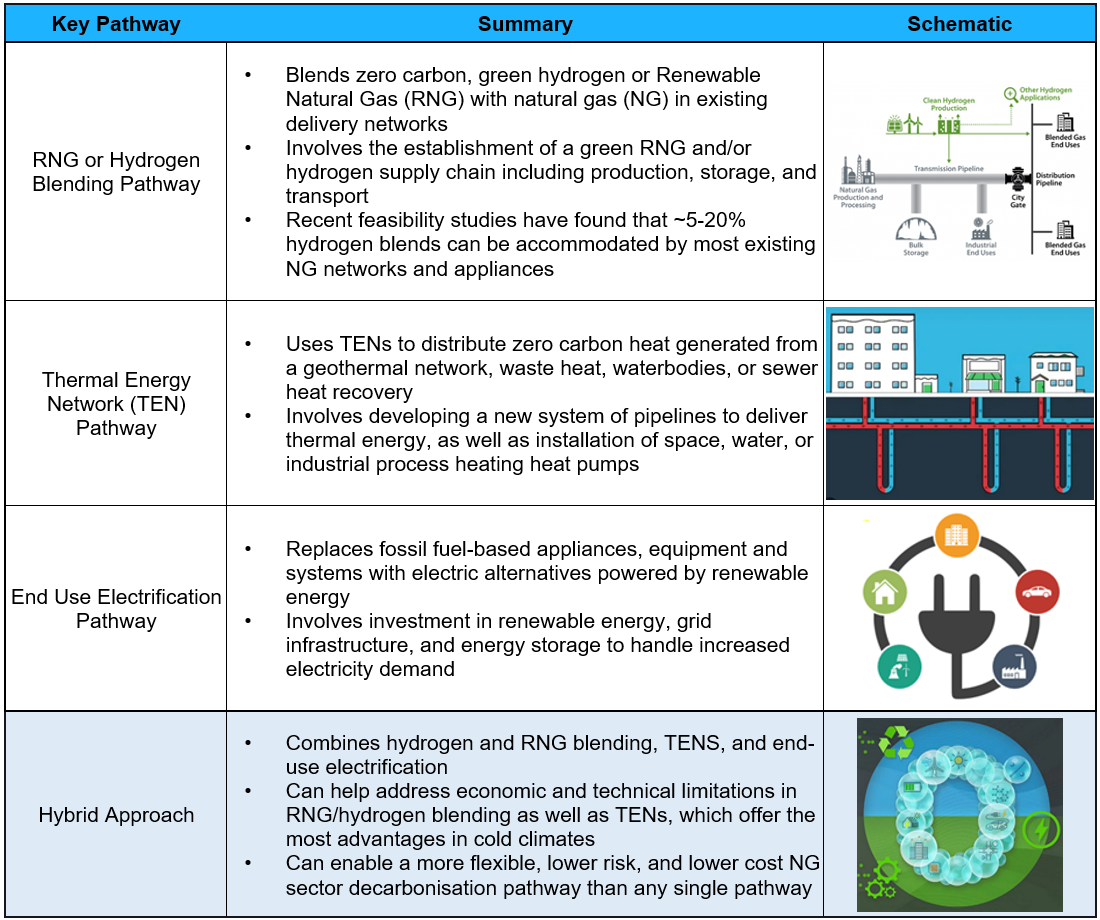
Since each approach has its relative strengths and weaknesses, many jurisdictions are adopting a hybrid approach. The hybrid approach integrates one or more of these pathways, i.e. hydrogen and RNG blending, TENs, and end use electrification.
One of the key challenges facing jurisdictions is how to decommission the gas network in the face of mass electrification or a TENs, both from a technological and economic perspective.
Best Practice in Gas Network Decommissioning
There are two key questions underpinning gas network decommissioning:
- How do we define a decommissioning solution with minimal disruption?
- How do we determine the best way to recover the associated costs?
Energeia researched two major projects exploring gas decommissioning to identify current best practice – one in Northern California and the other in Austria.
International Best Practices
The Northern California project is a collaboration between California’s largest investor-owned utility (IOU), Pacific Gas and Electric (PG&E), and the California Energy Commission (CEC).[3] The study focused on the Oakland area and explored the effects large-scale gas network decommissioning would have on consumers, especially in economically disadvantaged communities.
The University of Vienna project investigated the most cost-effective decommissioning and refurbishment approaches for existing gas networks. The project included a case study analysis of a portion of the existing Austrian gas network.[4]
Both analyses prioritize the order of staged decommissioning segments of the gas infrastructure under two key considerations:
- Hydraulic Feasibility
- Cost Effectiveness
Figure 3 diagrams the sequencing criteria for decommissioning regional gas networks and the prioritization system is then tested via a series of pilots, such as those listed in Table 4.
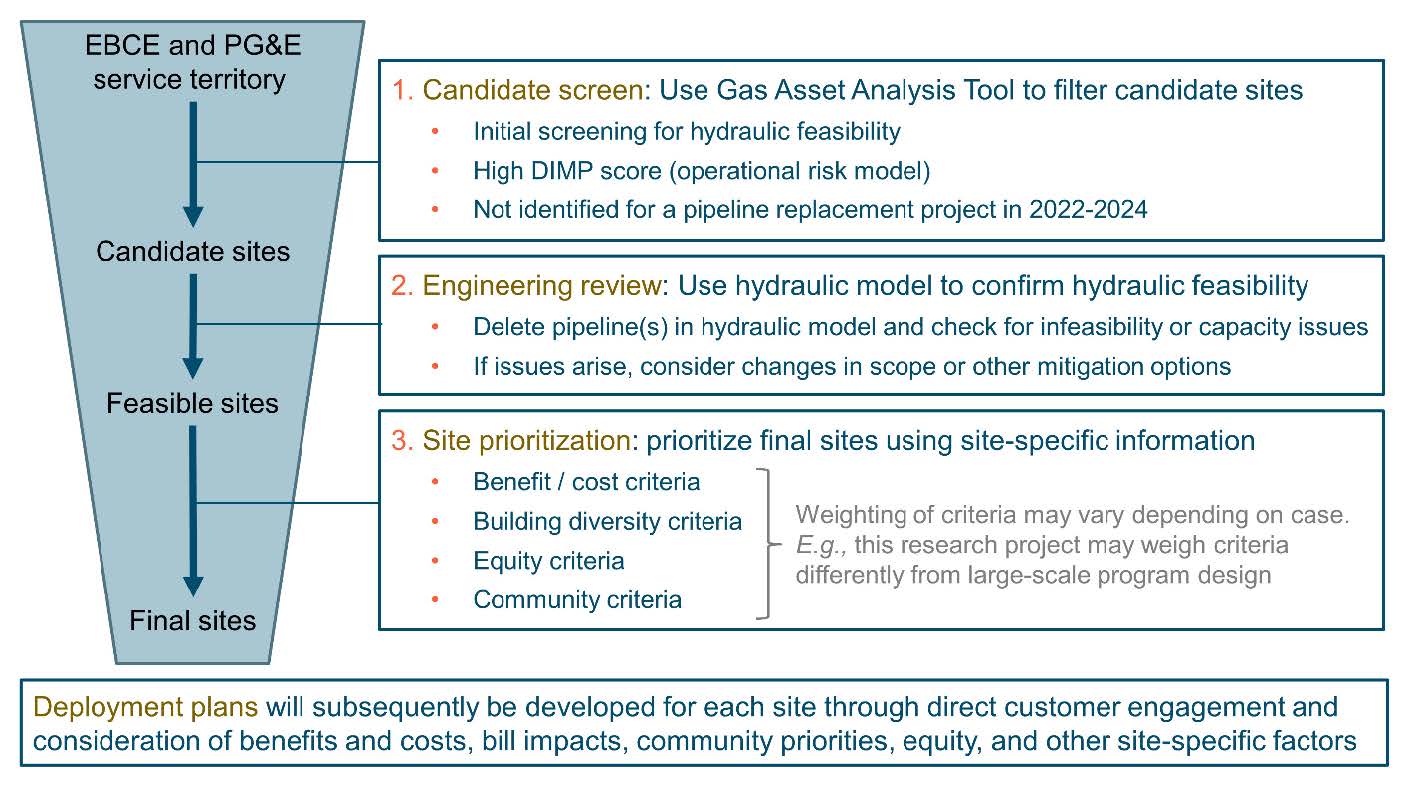
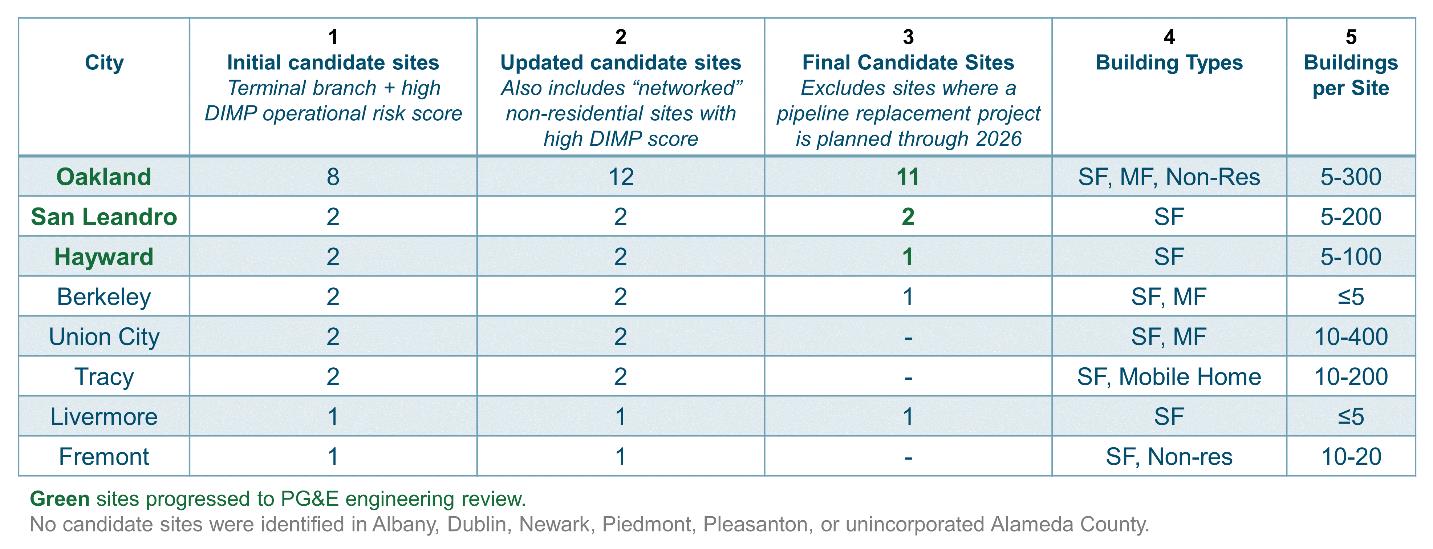
Informed by these studies and other research, Energeia developed a gas decommissioning optimization framework to identify the best segmentation approach:
- Categorize consumers into defined areas, with priority based on cost per unit of consumption
- Categorize distribution system segments and identify those with low-cost decommissioning, e.g. spurs, or high near-term investment needs, failing asset classes
- Prioritize decommissioning of the gas segments with the highest cost-to-serve per unit of consumption and lowest net decommissioning costs
To accurately understand the impact of removing segments of the gas network, hydraulic load flow modelling is used to quantify the impact and to identify related least cost investments needed to stabilize pressure where needed.
In addition to determining the least cost approach for the distribution network, Energeia researched customer barriers to gas decommissioning. Our key finding, shown in Figure 4, was that customers primarily concerned with the high upfront costs of electrification.
Listen or click through at your own pace
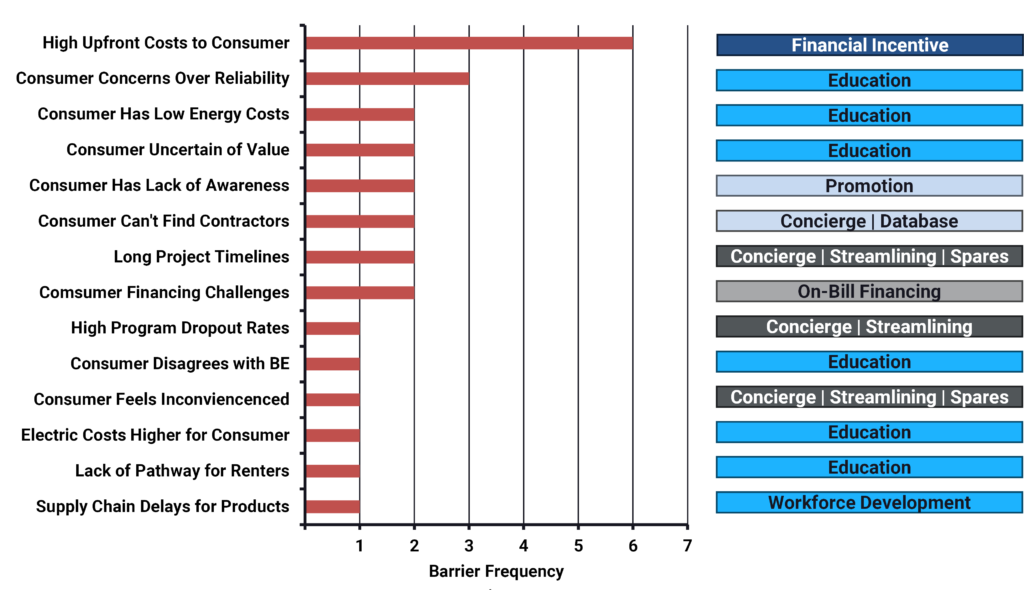
Based on the above, Energeia identified a range of key strategies for policymakers to address these key consumer barriers, including:
- Economic support for consumers to overcome the higher upfront costs of electrification
- Educating consumers about the key benefits of electrification to respond to a range of information gaps identified in the above figure
- Streamlining the electrification process with turnkey services can assist in addressing the inconvenience barrier from switching over existing gas end uses, and
There is also the issue of who should bear the cost of decommissioning and writing down the gas network assets. The Australian Energy Regulator (AER)[5] has allowed gas network owners to use accelerated asset depreciation to recoup costs sooner while more consumers continue using the gas network. However, this increases and accelerates possibility of a death spiral for the consumers connected to gas and remains an unresolved this point of contention.
A 2024 report by Ofgem in the UK identifies the key issues and potential options for who funds the remaining gas assets. Options for who pays include:
- Government – Write-down and decommissioning costs are recouped from current and future taxpayers, avoiding a premature death spiral;
- Gas network investors – Ofgem highlights this would “create asset stranding risk” and “likely not be in the consumer interest”;[6]
- Future consumers – Ofgem notes that this will be a relatively small group of consumers, with many falling into ‘vulnerable’ categories;
- Current consumers – Requires an increase in network charges in advance of actually incurring cost to be put into a decommissioning fund; and
- Purchasers of the networks for repurposing – The decommissioning costs would be passed on to future asset investors, reducing purchase their price.
Similar discussions are being held in most other jurisdictions, but few appreciate the impact on decommissioning cost efficiency.
Optimizing Gas Decarbonization
Energeia developed an economic model of Australian gas network decommissioning under two shutdown scenarios based on the best practice research above. This model was used to evaluate the effect these different scenarios would have on the speed at which gas network assets are decommissioned and customers electrify.
The two gas network shutdown methods modeled were:
- Threshold – This scenario involves shutting down the gas network by suburb once a certain threshold is reached, based on a percentage reduction in gas consumption compared to the base year. For this analysis, the threshold percent reduction was assumed to be 20%, being the threshold below which it is cheaper to decommission.[7]
- Phased – This scenario shuts down an equal number of suburbs each year over a predefined period, resulting in the steady decommissioning of the entire gas network.
This approach may be more realistic from a planning and delivery point of view, but at the cost of potentially higher costs due to premature decommissioning.
Energeia developed a set of gas network cost allocation policy scenarios to be tested under the two gas network shutdown scenarios described above using our customer price response model. The cost allocation scenarios aim to test how the rate of consumer electrification is impacted by different methods of recovering gas network asset value and decommissioning cost. The three cost allocation policies Energeia modeled can be seen in Table 6 below.

Figure 5 illustrates the impact of these cost allocation options on gas network prices for the phase scenario. The results show that the taxpayer-funded method helped to keep gas prices down, preventing mass consumer defection as costs rise. This approach can minimize the write-down costs for consumer gas appliances and industrial gas assets.
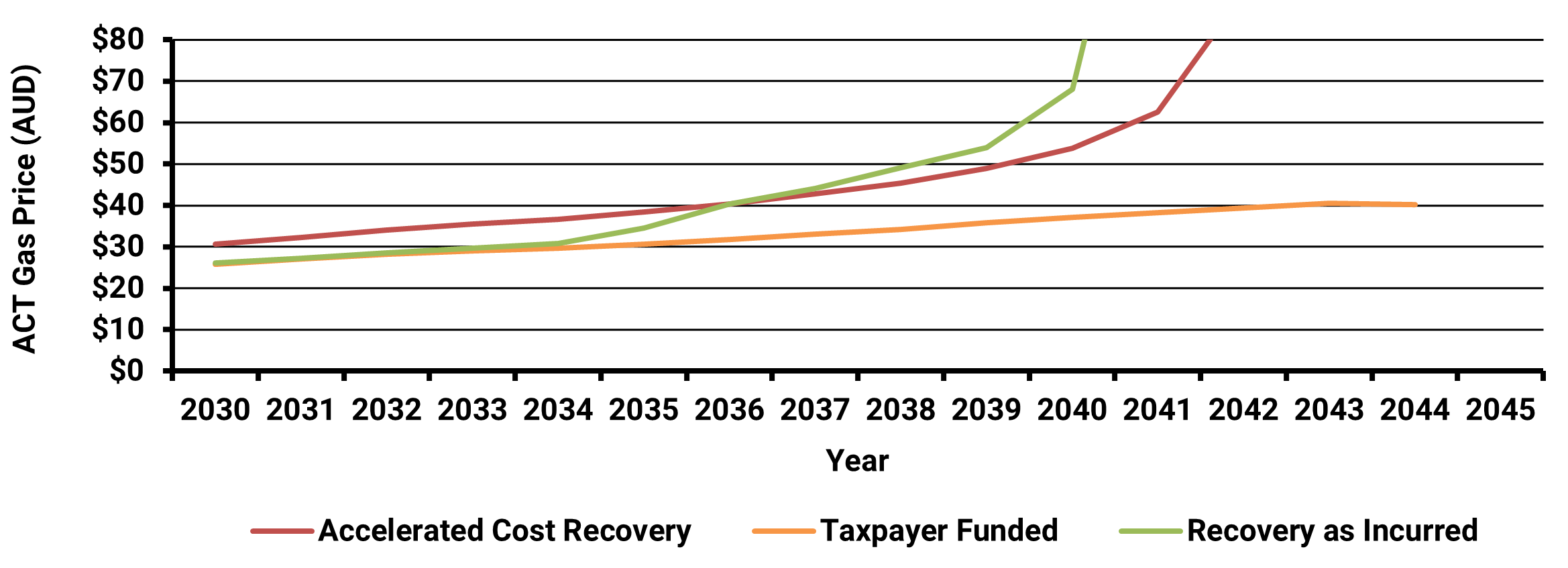
Energeia also modeled the impact of different policy support levels for the Phased decommissioning and Accelerated Cost Recovery scenario. Four different rates of policy support from highest to lowest were modeled: no intervention, delayed, balanced, and accelerated. The impacts of these policy scenarios on phase network decommissioning (as a % of 2023 network size) are shown in Figure 6. The analysis shows that the threshold approach can lead to rapid shutdowns, due to consumer defection from higher gas network prices under an accelerated cost recovery policy.
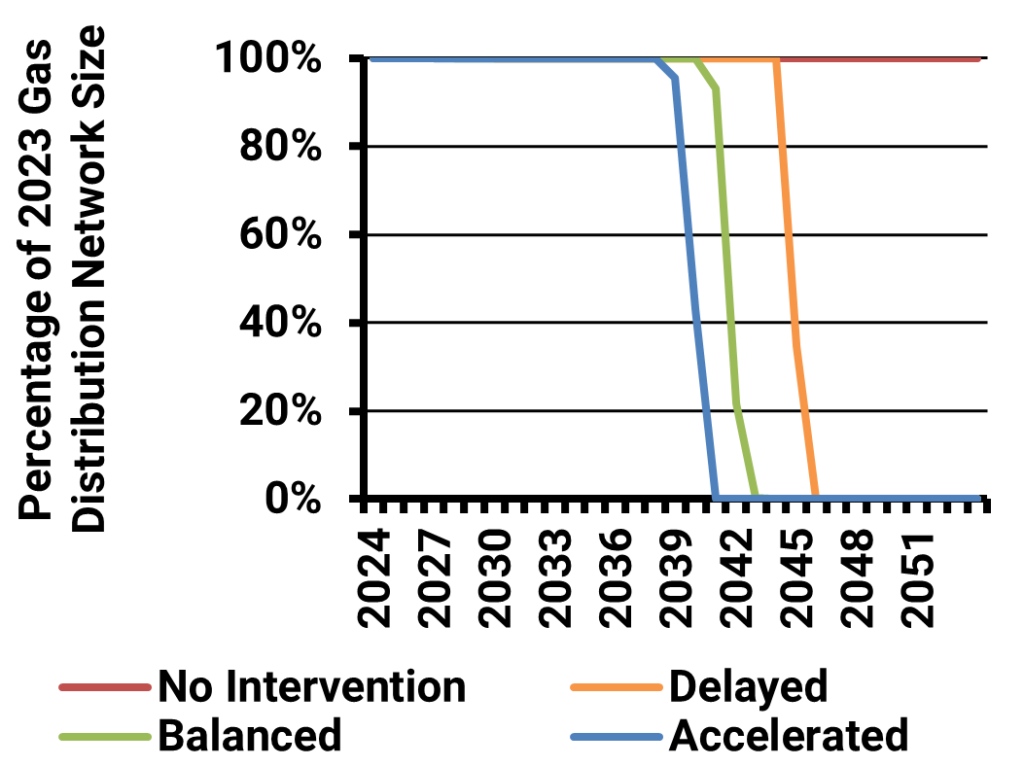
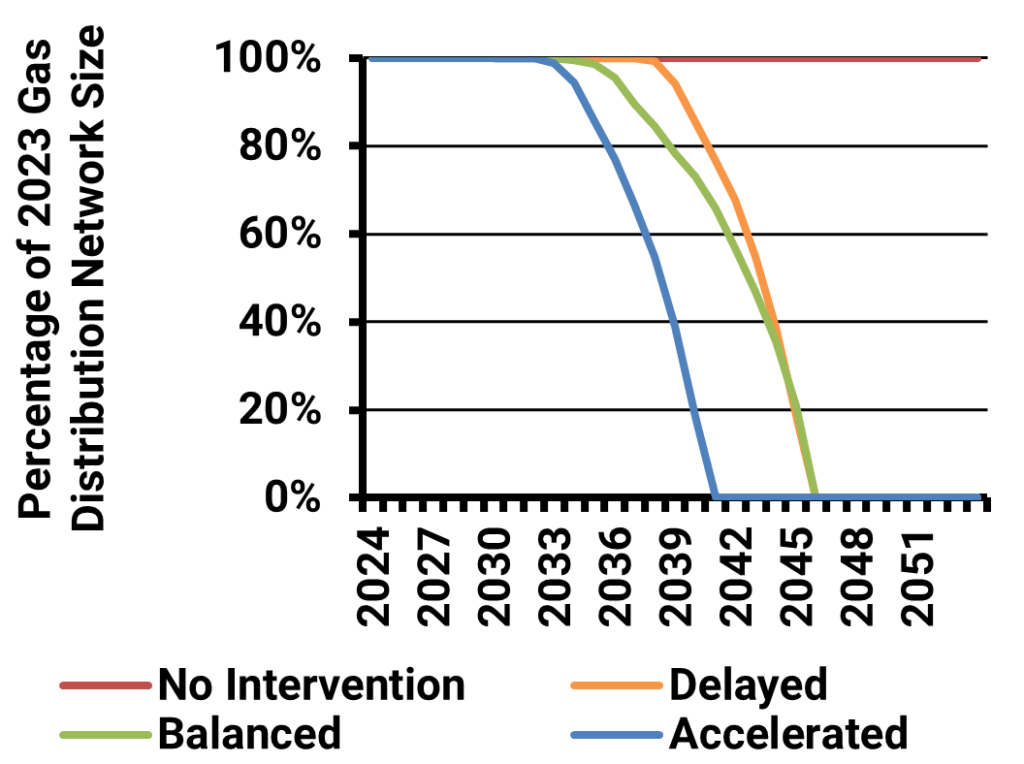
Takeaways and Recommendations
The key takeaways and recommendations for gas decommissioning (derived from Energeia’s best practice research and innovative analysis) are summarized below.
Key Takeaways
- As the second largest source of CO2 emissions by fuel type, decarbonizing the United States’ natural gas consumption is essential
- Electrification is one option for decarbonization; however, there are other options including green hydrogen, other clean fuels, and TENs
- A hybrid approach appears to be the most common current approach, which enables technological advancement
- Electrification can deliver full decarbonization of the natural gas system, but it comes at a cost, which includes gas asset write-downs and decommissioning costs
- Optimizing decommissioning costs requires a whole-of-system approach (including electricity and gas sectors, and consumer equipment costs)
- Gas decommissioning data availability is limited; more robust and accessible data is needed to identify the optimal pathway
- Key considerations include decommissioning timing, duration, triggers and segmentation of the gas system, as well as bans, incentives, and cost allocation
- Significant decommissioning and write-down costs, including customer appliances, may favor pushing out these costs
Key Recommendations
- Take a wide view of potential pathways to decarbonizing the natural gas system, including TENs and clean fuels to minimize overall costs
- Investigate costs for emerging technologies like TENs and zero-carbon fuels and potentially invest in research and development to bring costs down
- More data on costs is essential to making the best possible decisions
- When optimizing the decarbonization pathway, it is essential to take a whole-of-system approach, including customer appliance costs
Watch the full webinar playback below and follow along with the complete presentation.
[1] Executive Order 14057: Catalyzing Clean Energy Industries and Jobs Through Federal Sustainability
[2] U.S. EPA (07/08/2024), Sources of Greenhouse Gas Emissions, see https://www.epa.gov/ghgemissions/sources-greenhouse-gas-emissions#:~:text=Combustion%20of%20natural%20gas%20and,and%20commercial%20sector%20in%202022.
[3] Tactical Gas Decommissioning Project Overview (2022), see https://gridworks.org/2022/06/tactical-gas-decommissioning-project-overview/
[4] Designing a model for the cost-optimal decommissioning and refurbishment investment decision for gas networks: Application on a real test bed in Austria until 2050, see https://www.sciencedirect.com/science/article/pii/S2211467X23000883
[5] Australian Gas Networks Gas distribution access arrangement (2023), see https://www.aer.gov.au/system/files/AER%20-%20AGN%202023-28%20-%20Final%20decision%20-%20Attachment%204%20Regulatory%20depreciation%20-%20June%202023_0.pdf
[6] RIIO-3 Sector Specific Methodology Consultation – Finance Annex (2024), Ofgem https://www.ofgem.gov.uk/sites/default/files/2023-12/RIIO-3%20SSMC%20Finance%20Annex.pdf, pg 69.
[7] The actual threshold requires significant analysis and will be utility specific.
You may also like

Moreno Valley Integrated Resource Plan (IRP)
Energeia was engaged by Moreno Valley Utility (MVU) to develop their 2023-25 Integrated Resource Plan (IRP). As part of this process, Energeia will be analyzing
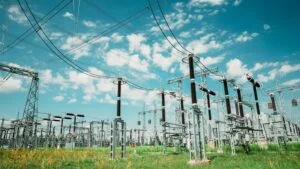
BESS Forecasting for an Array of Cities Nationwide
Energeia’s research and data engineering expertise proved essential in building a comprehensive custom database of utility grid infrastructure spatial data for each target market.

LADWP Develops an Integrated Human Resources Plan to Aid the LA100 Program
Los Angeles Department of Water and Power (LADWP) gathered a team of leading industry experts, including Energeia, to develop an Integrated Human Resources Plan (IHRP)

